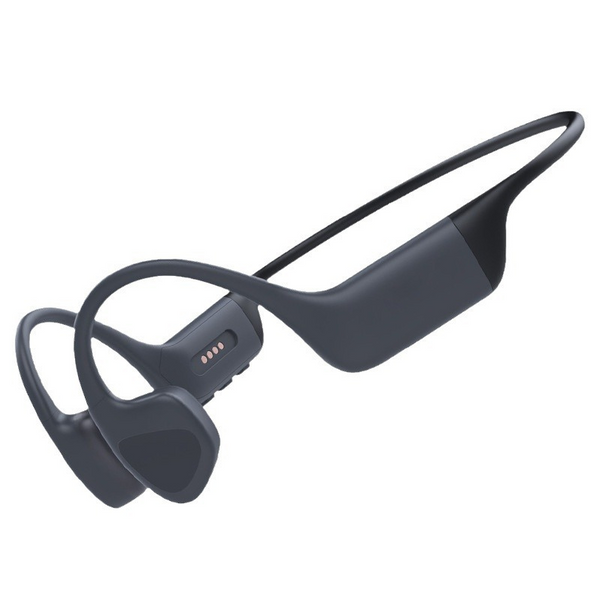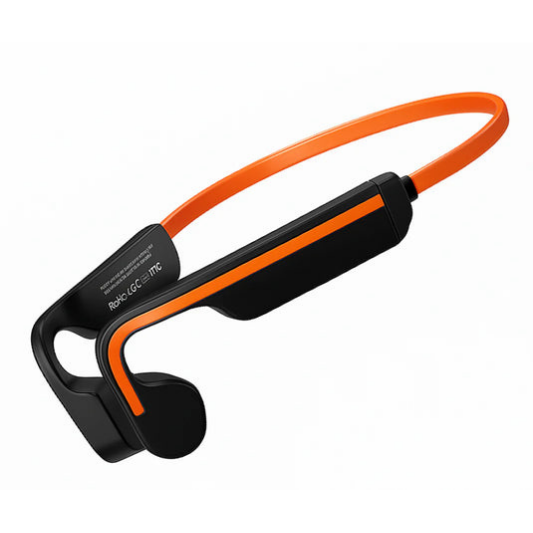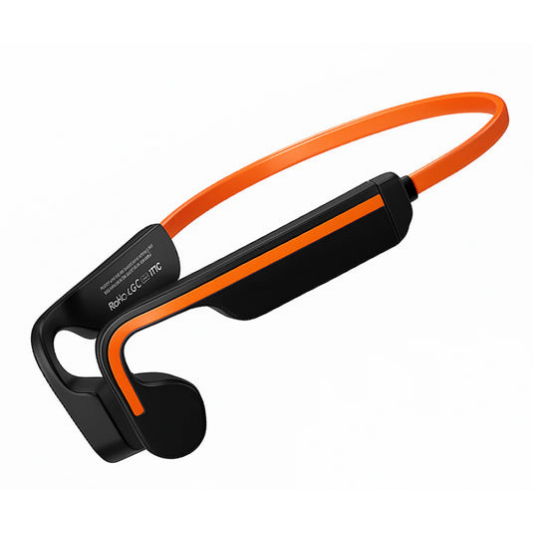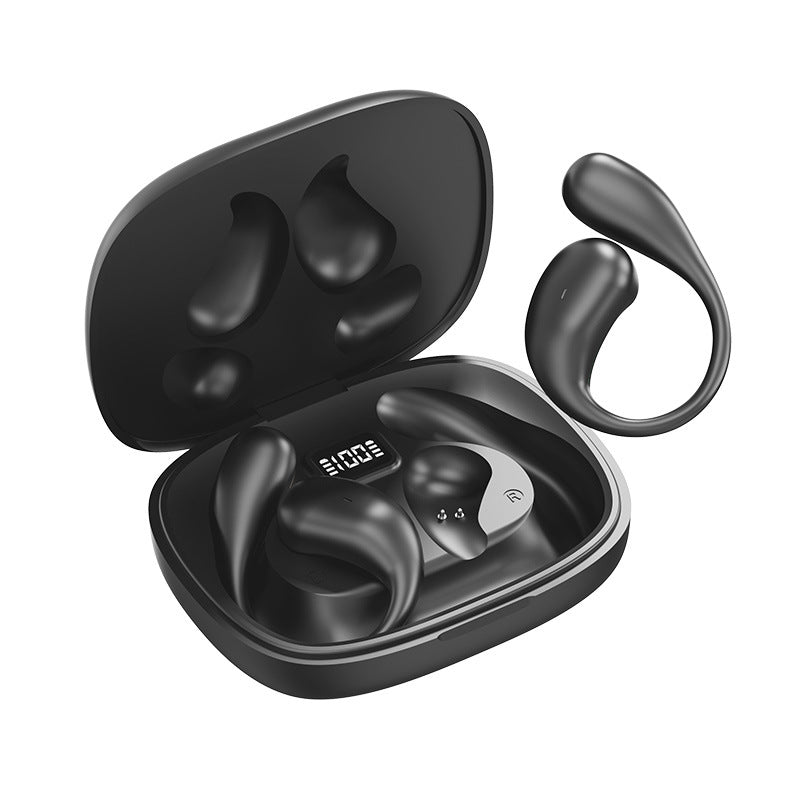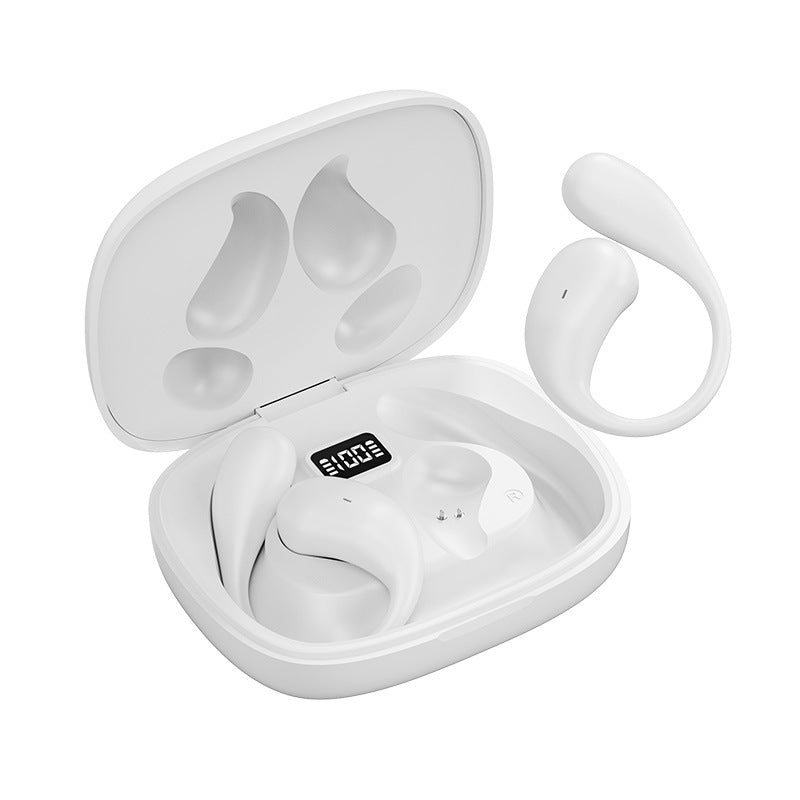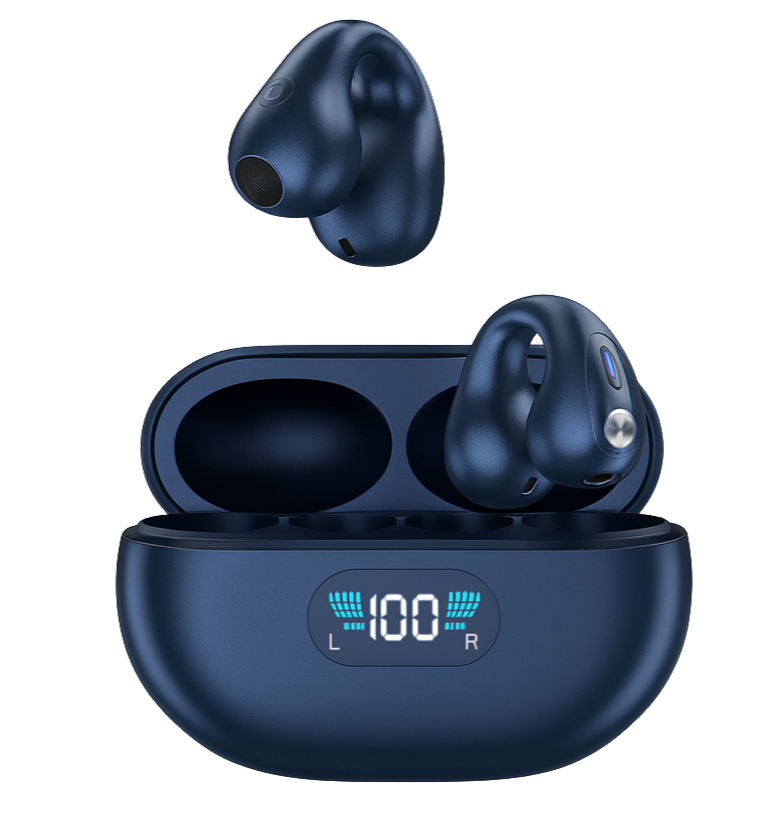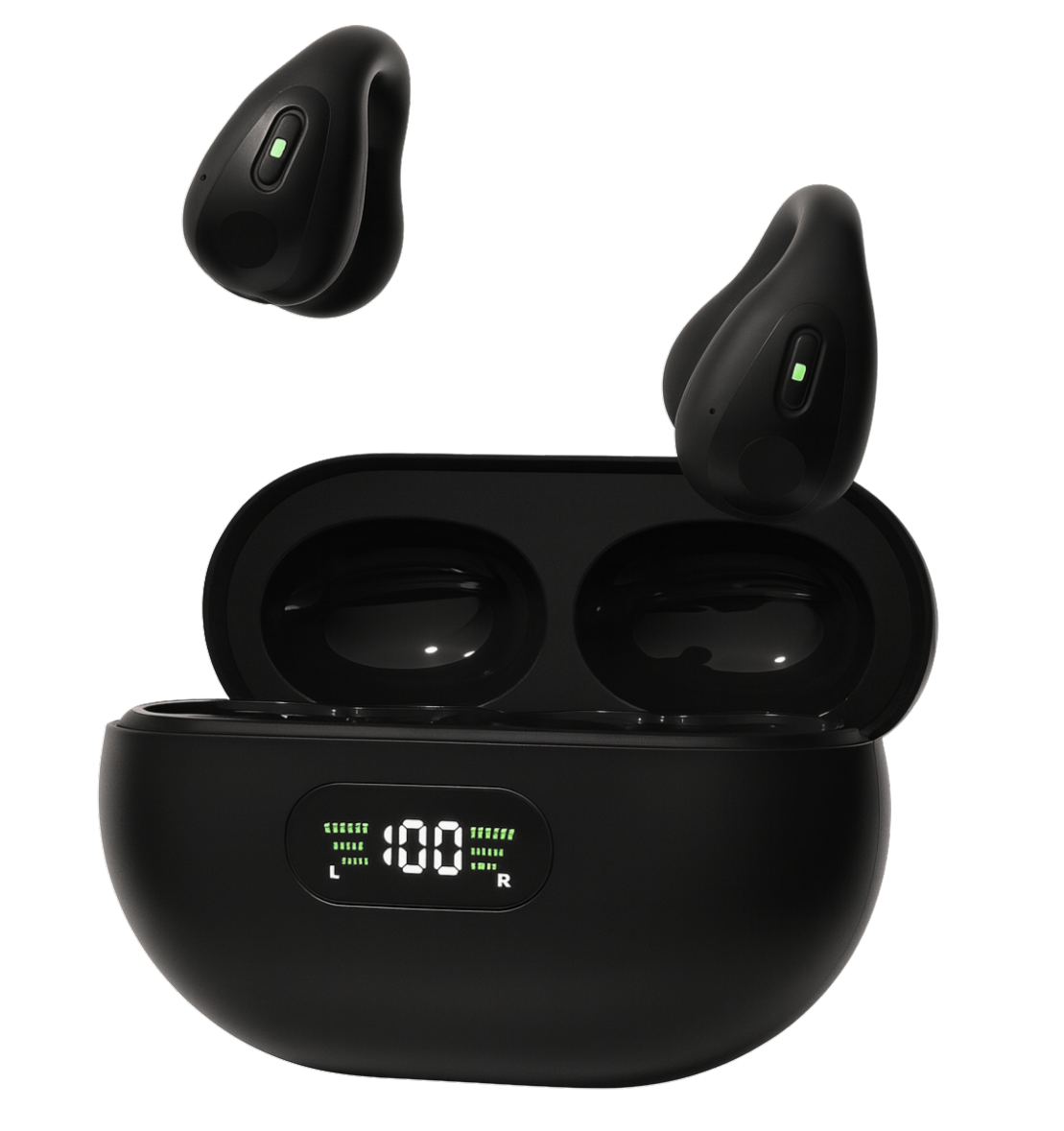Bone conduction headphones are becoming increasingly popular thanks to their innovative technology that transmits sound through the bones of the skull, leaving the ears completely free. This unique feature provides exceptional comfort, especially for athletes or those who want to stay aware of their surroundings. But one question often arises: can you really listen to music while having a conversation with this type of headset? Between promises of versatility and technical limitations, this article explores the real capabilities of these devices and the situations in which they truly shine.
Can You Really Listen to Music While Having a Conversation?
Bone conduction headphones stand out with a unique promise: allowing you to listen to music or take calls while remaining aware of what’s happening around you. Unlike traditional earbuds that block the ear canal, these models transmit sound vibrations through the bones of the skull, keeping your ears open. But is it really possible to enjoy clear sound while naturally talking to someone? The answer depends on the headset’s technology, the volume level, and your environment.
An Open Listening Experience That Preserves External Awareness
The main advantage of bone conduction headphones is their ability to deliver sound without isolating the listener. Since your ears remain open, you can still hear ambient noises, voices, and conversations. This means you can listen to music and talk at the same time—provided you keep the volume at a moderate level.
This technology strikes a balance between immersion and alertness, making it perfect for situations that require awareness: at work, on a walk, or during outdoor workouts. For example, a jogger can enjoy their favorite tracks while chatting with a friend without having to remove the headset.
Sound Quality: A Trade-Off to Understand
While these headphones allow you to listen to music and talk simultaneously, the listening experience differs from that of traditional in-ear headphones. Bass tones are usually less deep since the sound is transmitted by vibration rather than airwaves. However, newer models deliver increasingly accurate audio quality, particularly in the mid and high ranges.
During a conversation, your auditory focus naturally shifts—your brain filters the music to prioritize your interlocutor’s voice. This cognitive adaptation lets you talk comfortably even with music playing. However, in very noisy environments, it may be necessary to lower the volume or pause the music to fully understand the other person.
The Best Bone Conduction Headphones
High-end models—like those from ImaxSound—feature technologies that optimize the balance between comfort and sound quality. Their premium bone conduction headphones deliver clear audio while keeping your ears open. Thanks to advanced vibration systems, the sound remains stable even at low volumes—perfect for chatting without turning off your music.
These models also include noise-canceling microphones for clearer phone or voice communication, even outdoors. This allows you to talk, listen, or take a call without removing your headset or changing any settings.
Everyday Comfort
Beyond the technology, ergonomic design plays a key role. Lightweight, sweat-resistant, and often waterproof, bone conduction headphones adapt to all situations: sports, work, commuting. Their open design makes them ideal for those who value safety, comfort, and freedom of listening.
How Does Bone Conduction Audio Work During a Conversation?
Bone conduction is a fascinating technology that’s transforming how we experience sound. Unlike traditional headphones that deliver sound waves through the air, bone conduction headphones transmit vibrations directly through the skull bones to the inner ear. This approach keeps your ears open while providing clear and precise sound. But how exactly does this system work when you’re having a conversation—either face-to-face or on a phone call?
The Basic Principle: Vibrations Replace Sound Waves
At the heart of bone conduction is vibration transmission. In these headphones, the speakers rest on your temples or cheekbones—not inside your ears. When a sound signal (music, voice, or call) is sent, built-in transducers convert the electrical signal into mechanical vibrations. These vibrations travel through the temporal bones of your skull to reach the cochlea—the inner ear organ responsible for turning mechanical signals into nerve impulses that the brain perceives as sound.
This process allows you to hear sound perfectly without using the eardrum. During a conversation, your ears remain open to external sounds: you hear both the person speaking to you and the voice coming through your headset. That’s what makes this technology so special—it doesn’t isolate you from your surroundings like traditional headphones do.
A Technology That Encourages Natural Communication
One of the greatest strengths of bone conduction is its ability to maintain “dual awareness.” You can listen to music, take a call, or hear notifications while still perceiving the people and sounds around you. Because bone conduction doesn’t block the ear canal, communication feels natural and effortless.
During a conversation, your brain performs a type of cognitive filtering—it prioritizes important sounds. Even with background music, your focus instinctively shifts to the person’s voice. This mechanism, known as auditory selectivity, is enhanced with bone conduction since ambient sounds remain audible.
This is especially useful in professional or social environments where staying alert is crucial. For example, you can join an online meeting while still hearing colleagues or nearby traffic—a perfect balance between connectivity and awareness.
The Role of the Microphone and Sound Processing During Calls
Modern bone conduction headphones don’t just transmit sound—they’re equipped with noise-canceling microphones to ensure clear, smooth communication. During a call, these microphones capture your voice while filtering out unwanted background noise using digital sound processing algorithms.
As a result, even in noisy environments (like streets, gyms, or public transport), your voice comes through clearly. Meanwhile, bone conduction lets you hear the other person without losing awareness of your surroundings. This two-way optimization is what makes these headsets so practical for mobile or professional communication.
High-end models like ImaxSound’s feature optimized bidirectional audio processing: the sound from your music or voice is precise, while the microphone automatically adjusts capture levels based on ambient noise. The result? A clear, echo-free conversation.
A Smooth and Safe Listening Experience
During conversations, bone conduction acts as a bridge between your internal and external environments. You stay connected without being cut off from the world. This is especially valuable for athletes, cyclists, or professionals on the move who need auditory safety.
Latency is minimal—the delay between transmitted and received voices is almost imperceptible. This allows for smooth, natural, echo-free conversations, even during physical activity. Some models are also compatible with voice assistants (Siri, Google Assistant, Alexa), so you can control your device hands-free while still talking to others.
And since your ears remain open, comfort is superior: no fatigue, no closed-ear sensation, and no acoustic pressure. You can converse for hours while enjoying discreet background music.
Advantages and Limitations of Bone Conduction Headphones
Bone conduction headphones have revolutionized how we experience sound and interact with audio in daily life. By transmitting sound vibrations through the skull, they provide a unique listening experience while keeping your ears completely open. But while these devices are attracting athletes, professionals, and tech enthusiasts alike, it’s important to understand both their strengths and limitations before choosing one.
Advantages: Comfort, Safety, and Freedom
1. An Open and Natural Listening Experience
The primary advantage of bone conduction is that it allows you to enjoy sound without blocking your ears. Unlike in-ear headphones, bone conduction headsets don’t sit inside the ear canal. The sound is transmitted via vibrations directly to the cochlea, allowing full awareness of your surroundings.
This is ideal for outdoor activities—running, cycling, hiking—where alertness is essential. You can listen to music or take calls while still hearing environmental sounds like traffic, pedestrians, or alerts.
2. Superior Comfort for Extended Use
These headsets are ultra-light and ergonomic, made with flexible, sweat-resistant materials. The absence of earbuds eliminates discomfort or pressure, making them pleasant to wear for long hours.
They’re also a great option for people prone to ear irritation or fatigue since they don’t involve the eardrum or ear canal.
3. Safer for Hearing Health
Because they bypass the eardrum, bone conduction headphones reduce the risk of hearing damage caused by prolonged high-volume listening. The sound is transmitted through gentle vibrations, evenly distributed across the skull.
This technology has long been used in medical hearing devices for people with conductive hearing loss, offering a clear and safe listening alternative.
4. Versatility and Connectivity
Modern bone conduction headsets—like ImaxSound’s—are compatible with most Bluetooth devices. They often include noise-canceling microphones, touch controls, and water resistance (IPX5–IPX7), making them ideal for outdoor or sports use. Battery life typically ranges from 6 to 10 hours, enough for a full day of use.
Limitations: Power, Isolation, and Adaptation
1. Different Sound Profile
Although improving rapidly, bone conduction headphones don’t yet match traditional headphones in terms of bass depth or sound power. Vibrations emphasize clarity in mids and highs but offer lighter bass response.
For audiophiles seeking deep, immersive sound, this might be a drawback—but for daily, athletic, or work use, the quality is more than sufficient.
2. Sensitivity to External Noise
The open-ear design can also be a limitation in noisy environments (like subways or open offices). External sounds can overpower your music or calls, requiring slightly higher volumes—which may impact battery life.
These headphones are not meant for full immersion, but rather for balanced listening between personal audio and environmental awareness.
3. User Adaptation
Some users may initially find the vibration sensation on their temples or cheekbones unusual, especially at high volumes. This typically fades after a few uses. Proper positioning is essential, as incorrect placement can reduce sound quality.
4. Battery Life Limitations
Despite being energy-efficient, their compact size limits battery capacity. Entry-level models may last under 6 hours, which might not cover a full day of intensive use.
Should You Choose Bone Conduction Headphones?
Bone conduction headphones offer an innovative alternative to traditional models. They’re not designed to replace high-fidelity studio headphones but to provide a different experience—safer, freer, and more comfortable. For athletes, active professionals, or anyone who wants to enjoy music without isolation, they’re an excellent choice.
However, for complete immersion, studio listening, or purely musical experiences, traditional headphones still deliver a more powerful sound.

